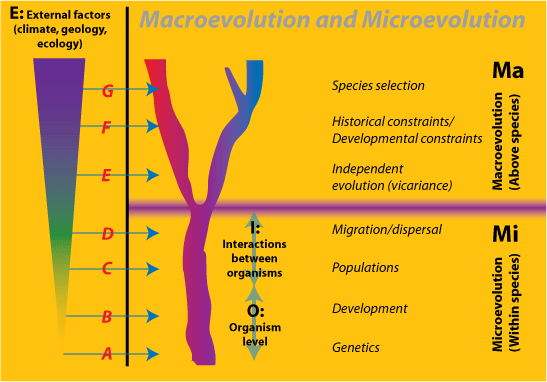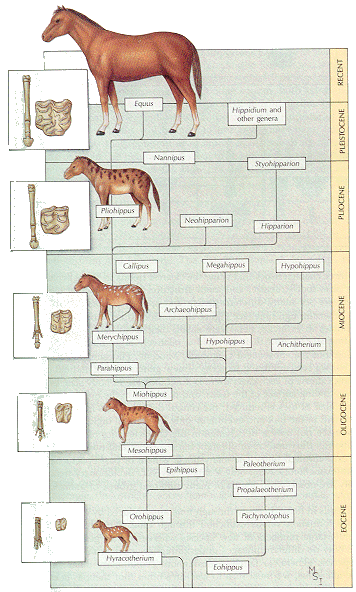- Stabilizing Selection
- Stabilizing selection is when the selective pressures select against the two extremes of a trait. Because of that a population experiences stabilizing selection. An example of this can be seen in plants. For example, one plant may be too short too thrive while another may be too tall. When combined, these too plants maintain a medium height.
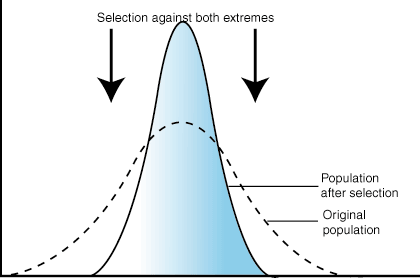 |
| The effect of stabilizing selection on trait distribution. |
2. Directional Selection
- Directional selection is when one extreme of the trait distribution experiences selection against it. Because of this, the population's trait distribution shifts toward the other extreme. Examples can be seen in giraffe necks. Shorter necks can't reach certain leaves, so in response, distribution of neck length shifts to those with longer necks.
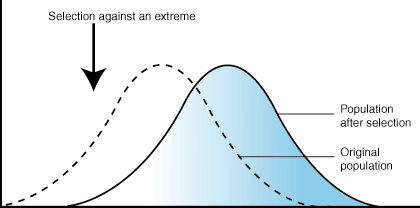 |
| The effect of directional selection on trait distribution. |
3. Disruptive Selection
- Disruptive selection is when selection pressures act against those in the middle of the trait distribution. The result is a bimodal. An example can be seen in flowers. For example, one type of flower has variable heights and is pollinated by three different pollinators. One that prefers short plants, one that prefers medium plants, and one that prefers tall plants. If the medium sized height liking pollinator was to disappear from the area, the population would grow more short and tall plants.
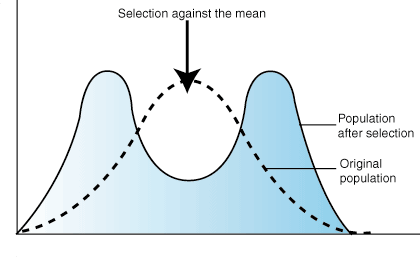 |
| The effect of disruptive selection on trait distribution. |
